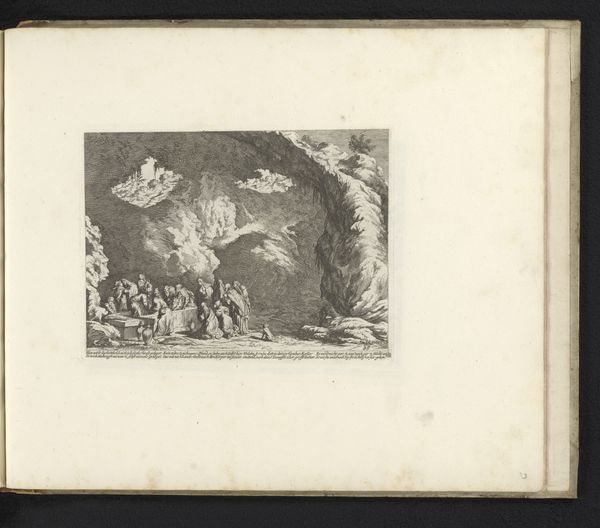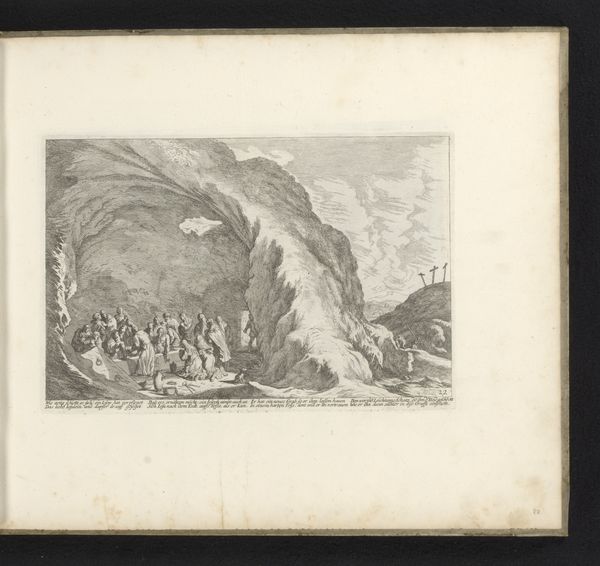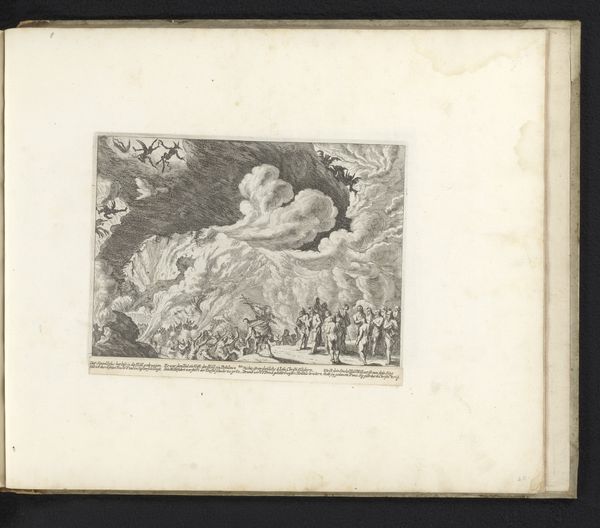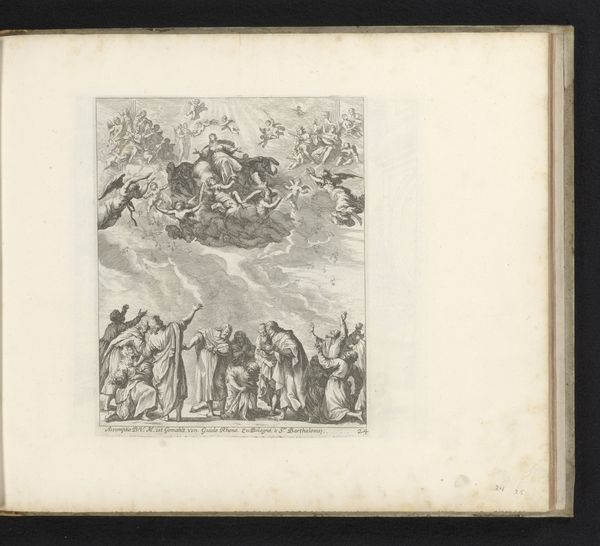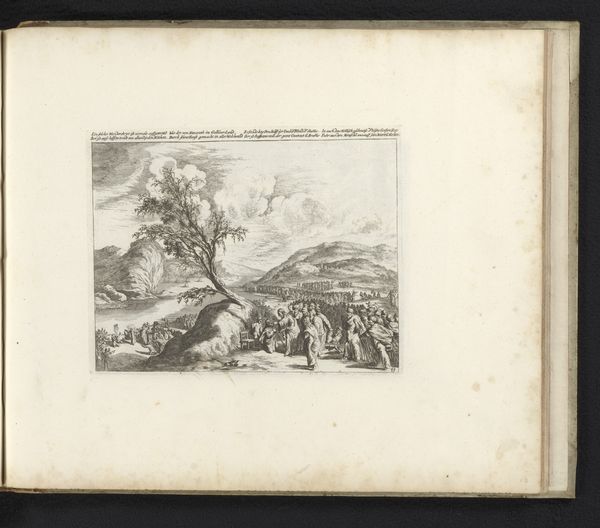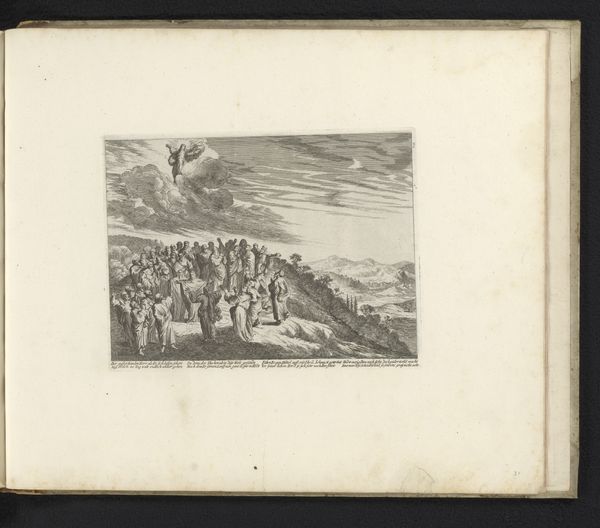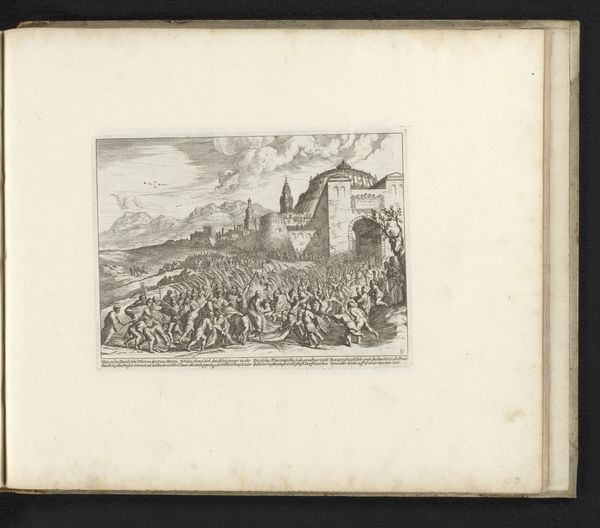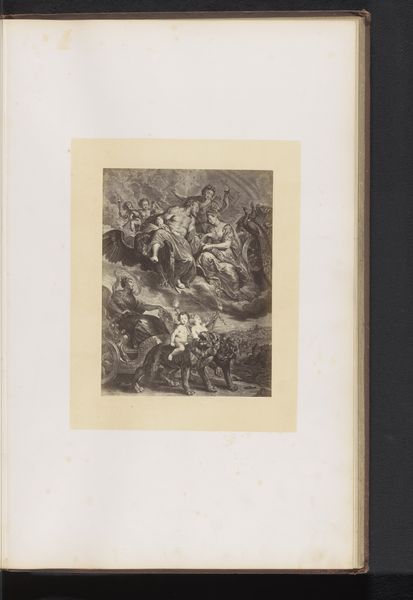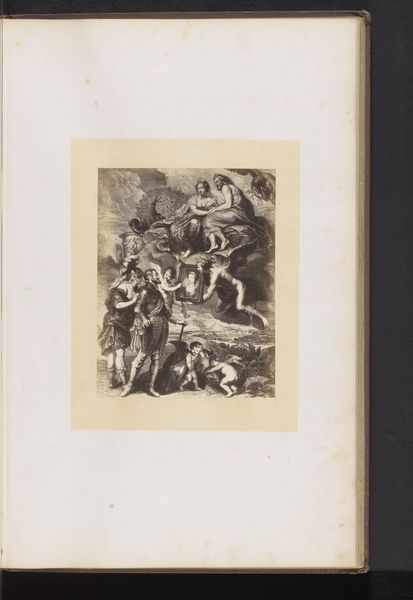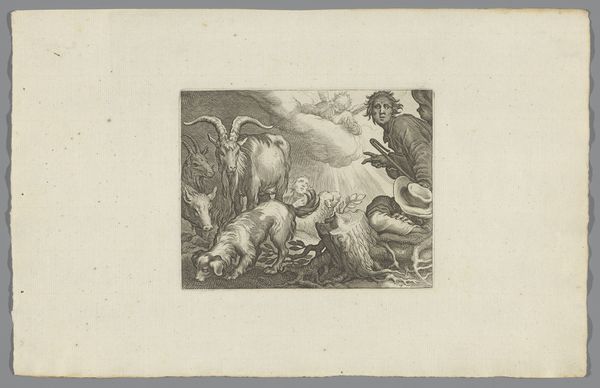
engraving
#
baroque
#
landscape
#
figuration
#
line
#
history-painting
#
engraving
Dimensions: height 157 mm, width 205 mm
Copyright: Rijks Museum: Open Domain
Editor: Today, we're looking at "Adoration of the Shepherds," an engraving by Melchior Küsel, created sometime between 1670 and 1682. It’s a baroque-style piece with a slightly chaotic, yet strangely comforting, feel. The scene is almost theatrical, set inside a cave. What strikes you most when you look at this piece? Curator: It feels almost dreamlike, doesn’t it? Küsel's work invites us into a sacred moment, reimagined within a grotto—a space traditionally associated with the rustic and the sublime. Notice the cascading light; it bathes the figures in a divine glow. It also reminds me of old stories told by the fireside, that place of enchantment and warmth amidst the darkness. Do you see that, too? Editor: Yes, there's a real contrast between the dark cave and the illuminated figures. It feels almost like a stage. Curator: Exactly! Küsel masterfully uses line to create a dramatic tension. It's less about perfect anatomical precision and more about evoking the emotion of the scene. The slightly frenzied gestures, the upwards gaze… they amplify the shepherd's awe and wonder. What do you think that angel, hovering above, adds to the whole drama? Editor: I think it creates a sense of the heavenly meeting the earthly, which is kind of the point, isn't it? It's like a window into another dimension. Curator: Precisely! And the choice of an engraving lends it an accessibility; it was meant to be disseminated widely, bringing this holy story to the everyday person. It makes you think about who has access to beauty, and how art brings things to the people. Editor: That's really interesting, I didn't think about that! I was so focused on the composition that I completely missed that the engraving method itself was also meant to convey an idea. Curator: Well, now you know.
Comments
No comments
Be the first to comment and join the conversation on the ultimate creative platform.
